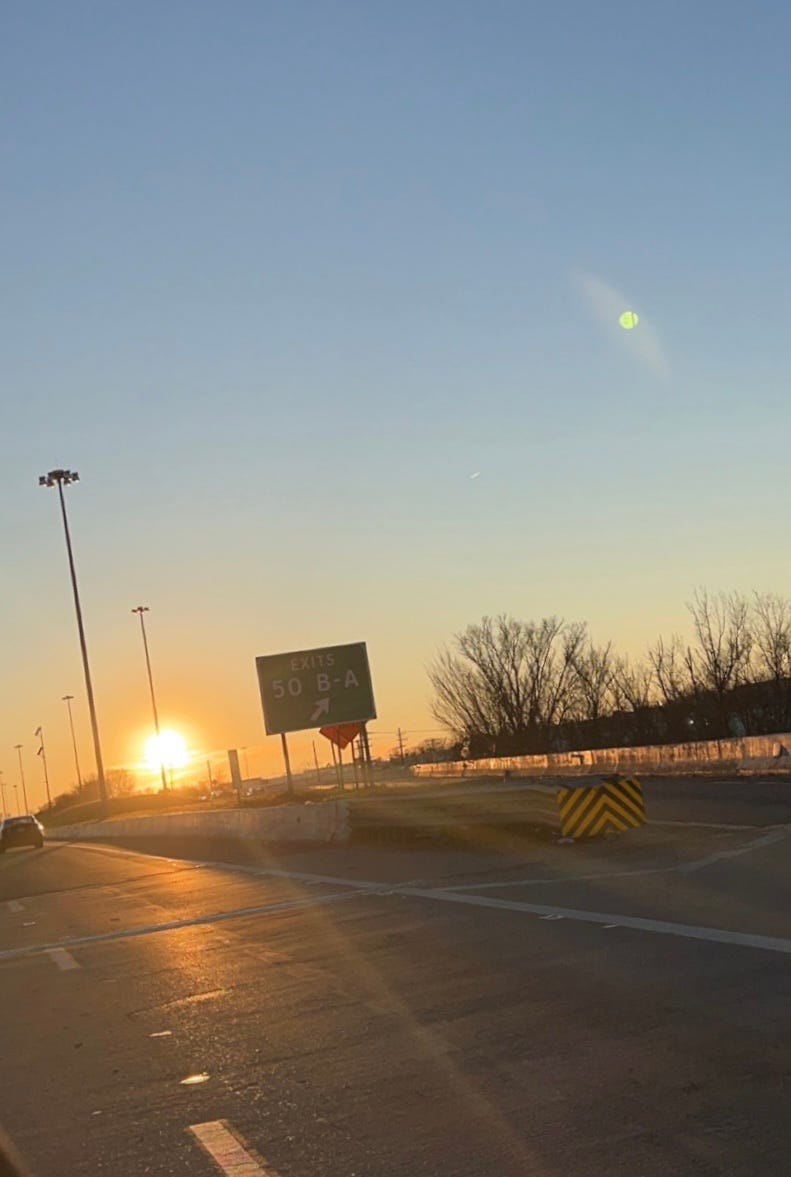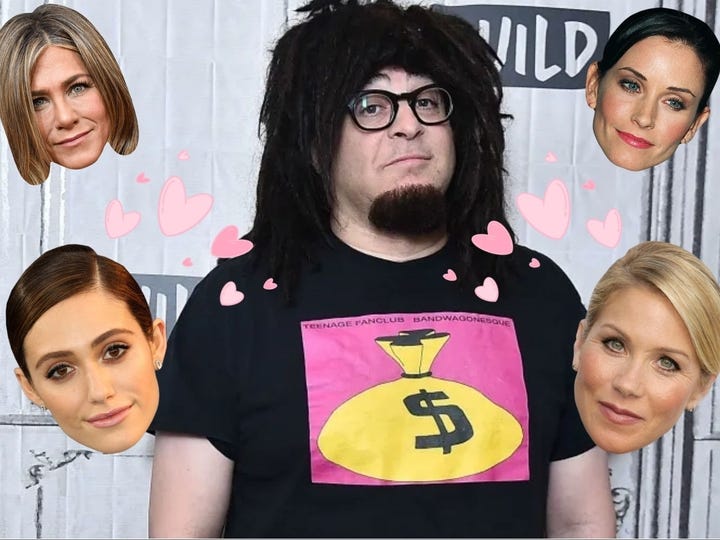What I'm Listening To, Q1 2024
Some music that's been top of mind lately as we careen towards springtime.
Greetings and welcome to the first Jamdraper Blog installment of What I’m Listening To. I told myself I’d stay consistent on the blog this year, even if I don’t have much to say. I generally try to write culture pieces, but sometimes I don’t have comments worthy of going long (surprising, I know.) Instead, I thought it would be a good opportunity to share some stuff I’ve been listening to lately, both old and new. This isn’t to say that I’m the preeminent music taste online-- there are much better places to go for that-- but hopefully you find yourself some new tunes to listen to, or at least identify with and reminisce about some of your favorites. Let’s get it started.
Townes Van Zandt Discography
I actually had to check my last year’s worth of newsletter posts to make sure I didn’t already write something about Townes Van Zandt. The doomed, jaded outlaw of mythical 1970s folklore commandeered my listening habits in 2023 to the rarified point of me considering getting some of his lyrics tattooed on my body. I had always been vaguely familiar with him-- my favorite Stones’ song and favorite Willie Nelson tune both come courtesy of Van Zandt’s pen-- but never took the time to listen. As it turns out, he might be my favorite lyricist ever, old wig-wearing poets notwithstanding (funny enough, Dylan’s favorite lyricist ever is Van Zandt. Your favorite rapper’s favorite rapper type beat.)
At his best behind a microphone, a guitar, a harmonica, and a few cigarettes in a lonesome Texas dive bar, Van Zandt sings about both nothing and everything, seemingly. He once said he wanted to make music so good that even he wouldn’t know what it was about. Just like some other great lyricists (the Dylans and the Springsteens), Van Zandt writes songs pointed enough to speak to you, personally, but ambiguous enough to avoid heavy-handedness, which allows you to project your own life upon his music. I doubt Van Zandt ever thought about the life of a Zoomer in Baltimore working a remote marketing job, but it cuts deep all the same. If you’ve ever experienced suffering, fleeting love, addiction, or yearning, take a few days with Van Zandt’s songwriting and see where it takes you.
What makes Van Zandt’s songwriting so singular compared to his contemporaries is its accessibility. While Springsteen paints a cinematic tableau of the American rebel and Dylan recites dictionaries and 13th century Italian poetry, Van Zandt’s songwriting is spoken by and for the Everyman. On r/townesvanzandt (Lord forgive me for visiting that subreddit), there are dozens of guys who are convinced that they are the next Van Zandt, and bless their hearts; it’s one of those situations where, as a writer, you’re almost frustrated listening to his music, wondering how nobody came up with lyrics like this through time immemorial. How did these words not already exist? While harrowing and profound, his lyrics are just obscured enough to move the masses. These are songs that have always been written, somewhere in the deep chasms of the universe; Townes Van Zandt was just the chosen vessel to deliver them.
Favorite songs: “Tecumseh Valley”, “Waiting Around to Die”, “Don’t Take it Too Bad”, “White Freightliner Blues (Live)”, or my entire TVZ Spotify playlist
AyooLii - Mindstate of Luxury
In 2023 the Milwaukee rap train left the station and is bound for both coasts. By the end of the year, I wouldn’t be surprised to hear big rappers biting their sound more than they already have. A Detroit rap child with dilated pupils and a computerized upbringing, Milwaukee is easily the most fun scene in a hyper-regional rap landscape these days. I’ve listened to a lot of music that sounds the same in my life, so singularity is a massive barometer for my own personal enjoyment. And, for how unique Milwaukee hip-hop is to begin with, AyooLii is probably the most unique of them all. There’s something to be said for an artist who, upon the first several seconds of a song, is immediately recognizable.
AyooLii music sounds like it came out of a high school weed dealer’s bedroom: unmixed vocals, hyper synth loops, and frantic Fisher Price melodies tell stories of scamming, percocet popping, and existential loneliness. His new project, Mindstate of Luxury, feels like another step in AyooLii developing his sound, clocking in at just under 25 minutes; a perfect primer for a rap sound you’ve never heard before, and might not hear anyone replicate again.
Favorite songs: “District 9”, “Pop a Perk, Go Bezerk, Go To Work”, “Tru To Me”
Beach Boys - the second half of Surf’s Up
Look, I wouldn’t feel comfortable writing this without being transparent: I’m a Beach Boys stan. I sang Barbara Ann on stage with them as a child, five feet from John Stamos, who was their tour drummer at the time. I fumbled a situationship once after I proclaimed The Beach Boys did more for music than the Beatles. After two domestic light beers, I’ll start vehemently requesting “Sloop John B” to be played in venues that don’t call for it. I’m shameless.
That being said, I don’t think early 70s Beach Boys music gets its due. Pet Sounds is certified, and early Beach Boys’ bubblegum pop tunes are culturally omnipresent. Even psych rock fans and music theory minds seem to be at least aware, if not appreciative, of the ever-elusive Smile. But some of the most emotionally moving and devastating music was made by The Beach Boys in the 70s.
It makes sense: the group was falling apart, their fate as a once loving unit all but sealed. Dennis Wilson was living with serial killers and doing far too many drugs; Mike Love was busy being toxic and actively fighting off the group’s artistic growth and evolution; and Brian Wilson was a lost cause, a paranoid recluse with a sandbox in his living room and a failed health food store. The end result was letting the third and less popular Wilson brother, Carl, take the reins, and the result was Surf’s Up, the most emotionally charged, graceful, and restrained pop record of its era.
Side A of the record is a classic, late-era, middling Beach Boys records, anchored by songs like Bruce Johnston’s “Disney Girls (1957)”, an ode to simpler times; an anthemic tune for the side of the band that disavowed counterculture and the deterioration of mid century social norms. Side B, though, is where Surf’s Up finds its singularity, specifically the last three tracks: “A Day in the Life of a Tree”, “‘Til I Die”, and “Surf’s Up”, the titular track written by songwriting prophet Brian Wilson and his partner-in-crime, Van Dyke Parks. Instead of lamenting a lost era or a flimsy love, these songs are shrieks of despair, touching on climate change, death, and hopelessness, barbiturate-fueled existentialism veiled behind sensitive, orchestral pop music and-- sometimes-- bird noises. A quick look at a Beach Boys playlist and the song “Surf’s Up” wouldn’t seem out of place. But it’s not a song about surfing at all. It’s a song about God, man, empires, institutions, and predetermination. The opening line references a Guy de Maupassant short story and an Edgar Allan Poe poem. It’s somber, it’s depressive, it’s visionary, and it ties the pensive tone of the album together.
This wasn’t the Beach Boys album in which Brian Wilson contributed the most, but it is some of his most impactful work. If you listen to the band’s discography in order-- a fulfilling endeavor, in my opinion-- it feels like the band’s entire career was leading up to the creation of the back half of Surf’s Up, their most criminally underrated album.
Favorite songs: “‘Til I Die”, “Surf’s Up”
Counting Crows - Films About Ghosts (The Best Of…)
Because fuck you, that’s why! The Counting Crows are great, and no amount of corny lyrics and jokes about Adam Duritz’s girlfriends in the 1990s can change that. Culture yourselves, plebes.
Favorite songs: “A Long December”, “Mrs. Potter’s Lullaby”, “Hanginaround”, “Round Here”


